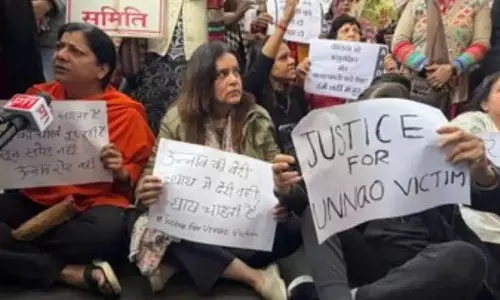
Is West Bengal's Raniganj another Joshimath in the making?
text_fieldsKolkata: Is Raniganj, the coal belt in West Burdwan district of West Bengal, heading towards a crisis similar to the one in Joshimath?
The land subsidence in Joshimath in Uttarakhand has affected hundreds of houses, shops and other establishments.
Experts do not rule out Raniganj facing a Joshimath-like situation in the coming days unless all necessary steps are taken to arrest the man-made irregularities that are making the area increasingly subsidence-prone.
The West Bengal Chief Minister Mamata Banerjee last week alerted that a Joshimath-like tragedy in Raniganj will affect the lives and livelihood of over 20,000 people in the region.
She had blamed the Central government for not providing adequate funds for rehabilitation of the people of Raniganj.
Trinamool Congress MLA from Raniganj assembly constituency, Tapas Bandyopadhyay claimed that Asansol-Durgapur Development Authority (ADDA), the implementing authority for rehabilitation of the people of the affected people in the area, has received just Rs 150 crore as against the Centre-announced rehabilitation package of Rs 2,600 crore.
Local BJP leader and former mayor of Asansol Municipal Corporation Jitendra Tiwari has claimed that rampant corruption by ADDA in utilisation of the Central funds is pushing Raniganj towards this inevitable crisis.
While a political slugfest in the matter is going on, IANS makes an attempt to get into the technical details on why this region has become so vulnerable to land-subsidence -- somewhat like Joshimath.
According to a civil engineer Pradipta Mitra, after a mine is abandoned by the official coal excavating authority like Coal India Limited the abandoned mines need to be filled up with a mixture of sand, soil and water.
"But often, there is grave negligence in this filling up process, which creates a vacuum there in the abandoned mines area. And after new constructions are made over these vacuum spots, the soils there are often unable to bear the weight and pressure of the new constructions and as a result frequent subsidence takes place in these areas," Mitra pointed out.
However, he added, that there will be a difference in the land-subsidence nature in Raniganj that that of Joshimath.
"In case of Joshimath the entire area is highly prone to land-subsidence. However, in the case of Raniganj, those areas are prone to land subsidence where there are constructions over such abandoned mines which have not been properly filled up. So, the land-subsidence nature in Raniganj area will be in a scattered manner unlike Joshimath. Still the apprehension of loss of life and property is there," Mitra explained.
Columnist and a veteran observer of the coal sector, Sunil Mukhopadhyay, said that since the abandoned mines of Coal India Limited in the Raniganj area are not filled up with the mixture of sand-soil-water adequately, such abandoned mines become the easy target for the smugglers for illegal coal mining.
"When regular mining takes place, the coal is excavated leaving pillars of coal blocks, which act as the support for the land over the undergrounds. Now it is the duty of the coal excavating entity to fill up the gaps between the pillars after abandoning the mines with that sand-soil-water mixture, so that the illegal miners are unable to target those coal-block pillars for illegal excavation.
"Now since there is blatant negligence in that filling up process, the smugglers target those pillars and start cutting and excavating coal from those pillars. Naturally, in this process the pillars become weak and the land-subsidence happens. And why does this negligence in filling up happens? The guess is easy... it is a nexus between the officials of the coal mining entity and the coal smugglers," Mukhopadhyay added.
According to the two-time former CPI-M Lok Sabha member from Asansol, Bansa Gopal Chowdhury, there was a verdict of the Supreme Court in 2004 which said that the coal excavating entity will also have to take the responsibility of filling up the abandoned mines.
"ADDA was made the implementing authority for the Raniganj masterplan for which the Union government sanctioned Rs 2,600 crore. As the local MP, when I was the chairman of ADDA, the work started for identification of subsidence prone lands in Raniganj, Jamuria areas. However, later that process stopped totally and the crisis deepened," Chowdhury said.
At the same time, an ADDA official said that there is yet another problem that is halting the progress of rehabilitation in the region.
"Many of the residents in the region are reluctant to vacate their exciting places and move to alternative places. They want the government authorities to take steps to arrest land subsidence without displacing them. But that is often not possible for technical reasons," the official said.
IANS with superficial editing by our desk























